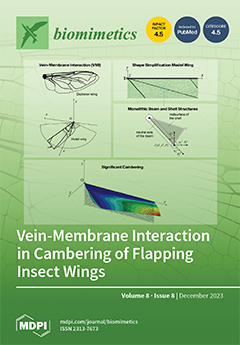In this work, we compare the basketball scoring performance of two imaginary (simulated) mechanical robots in conditions of erroneous information-processing circuits: Machine, whose moves are controlled by a conventional digital computer and Man, controlled by a random pulse computer composed of biologically-inspired circuits
[...] Read more.
In this work, we compare the basketball scoring performance of two imaginary (simulated) mechanical robots in conditions of erroneous information-processing circuits: Machine, whose moves are controlled by a conventional digital computer and Man, controlled by a random pulse computer composed of biologically-inspired circuits which execute basic arithmetic operations. This is the first comparative study of robustness of the digital and the random pulse computing paradigms, with respect to the error rate of the information-processing circuits (
), for a mechanical robot. In spite of the fact that Man’s computer consists of only about 100 logic gates while Machine’s requires about 3500 gates, Man achieves a significantly higher scoring probability for
in the range from 0.01% all the way to 10%, while at lower
, both converge to the perfect score. Furthermore, Man’s hits make up a smooth Gaussian distribution with a vanishing probability of making large misses even at the highest
, while Machine is prone to spectacular misses already at
as low as 1 part-per-million. These findings indicate that the biologically inspired computation requires less hardware for the same task, and ensures higher robustness and better behaving operation than digital computation, which are characteristics of importance for the survivability of living beings.
Full article






